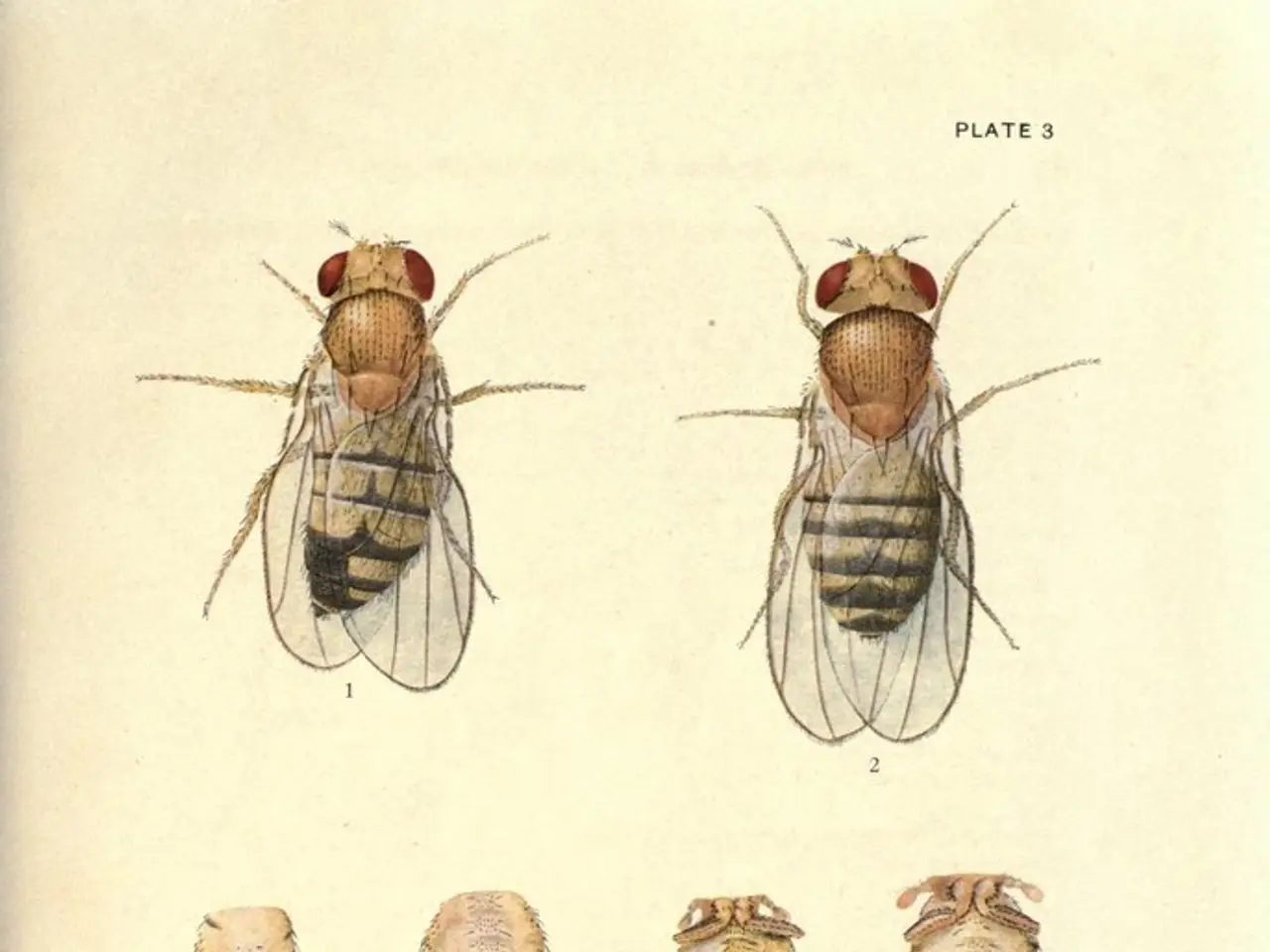Summer Pests: Ticks, Mosquitoes, and When to Be Concerned
Tick and Mosquito Precautions in Upstate New York
Ticks and mosquitoes are common in Upstate New York during the summer months, and their bites can sometimes lead to dangerous diseases. Here's what you need to know to protect yourself and reduce the risk of tick-borne illnesses such as Lyme disease, Anaplasmosis, and Babesiosis.
Tick-Borne Diseases and Symptoms
Lyme disease is the most common tick-associated disease in Upstate New York. Symptoms often start with a characteristic expanding "bull's-eye" rash (erythema migrans), accompanied by chills, fever, enlarged lymph nodes, sore throat, vision changes, fatigue, muscle aches, and headache. Later-stage Lyme disease may cause heart rhythm problems, numbness, meningitis, or joint damage.
Anaplasmosis symptoms include fever, headache, muscle pain, chills, nausea or abdominal symptoms, cough, confusion, and rarely a rash. Deer ticks can transmit not only Lyme disease but also Anaplasmosis and Babesiosis.
Prevention and Removal of Ticks
To prevent tick bites and reduce your risk of tick-borne illnesses, use insect repellents containing DEET (higher concentrations are needed to repel ticks than mosquitoes), wear closed-toe shoes, long pants with the pants tucked into socks, and treat clothing with permethrin or buy permethrin-treated clothing. Avoid walking in tall grasses or bushes by staying in the center of trails. After outdoor activities, shower within two hours, perform a thorough full-body tick check (including hard-to-see areas like under arms, behind knees, around ears and hair, belly button, waist, and between legs), and check pets that are outdoors. Wash clothing in hot water and dry at high heat to kill ticks. Prompt removal of attached ticks (within 12 to 24 hours) prevents most tick-borne infections.
To remove a tick safely, grasp it with fine-tipped tweezers as close to the skin’s surface as possible and pull upward with steady, even pressure without twisting or jerking. Clean the bite area thoroughly with soap and water.
Mosquito-Borne Diseases and Prevention
For mosquito-borne illnesses such as West Nile virus, prevention focuses on avoiding mosquito bites by using insect repellents, wearing protective clothing, avoiding outdoor exposure during peak mosquito times (dawn, dusk, night), and eliminating standing water around your home to reduce mosquito breeding sites. West Nile virus can cause fever, headache, or skin rash in mild cases, with extreme cases leading to convulsions, muscle weakness, paralysis, and brain infection.
Taking Precautions and Seeking Help
If you're concerned about a mosquito bite, reach out to a healthcare provider or begin a virtual urgent care visit through MyChart. If assistance is needed in removing a tick, UR Medicine Urgent Care locations are available. Start a video visit through MyChart if you're concerned about a mosquito bite.
Simple precautions include applying DEET-based bug repellant, staying on trails, tucking pants into socks, and drying clothes on high heat for an hour. It's important to check for ticks after coming inside, especially after spending time outdoors in high grass or leaf litter.
Other mosquito-borne diseases such as Zika virus, chikungunya virus, and dengue are uncommon in the United States (aside from Puerto Rico). To keep mosquitoes away, use bug spray or mosquito spray for the yard, ensure window and door screens are free of rips and tears, and rid the yard of stagnant water and change out waters in birdbaths.
Remember, prevention is key in protecting yourself from tick- and mosquito-borne illnesses. Stay informed, stay safe, and enjoy the outdoors responsibly.
This guidance specifically reflects recommendations for tick and mosquito precautions relevant to Upstate New York and similar tick- and mosquito-prevalent regions.
- Science reveals that ticks and mosquitoes in Upstate New York can lead to chronic diseases like Lyme disease, Anaplasmosis, Babesiosis, West Nile virus, and others.
- Workplace-wellness programs should include education on tick-borne diseases and mosquito-borne illnesses to help employees stay informed and protected.
- Medical-conditions such as chronic kidney disease, COPD, type-2 diabetes, and cancer may be exacerbated by environmental factors, including those associated with respiratory conditions and digestive health.
- Eye-health, hearing, and skin-care are important aspects of health-and-wellness, and practices like regular eye exams, hearing tests, and skin checks can help detect potential issues early.
- Fitness-and-exercise plays a crucial role in preventing chronic diseases and maintaining overall health, even in the midst of chronic diseases like Alzheimer's disease, autoimmune disorders, or multiple sclerosis.
- Climate-change is affecting the distribution of ticks and mosquitoes, making it essential to adapt and enact preventive measures to combat tick- and mosquito-borne illnesses.
- Renewable-energy sources like wind and solar power could reduce the impact of oil-and-gas and automotive industries on climate change, creating a healthier environment for all.
- Manufacturing plants should prioritize safety protocols to minimize exposure to harmful chemicals and improve worker health, particularly for those with respiratory conditions.
- Mental-health issues such as anxiety, depression, and stress can be triggered or worsened by work environments, and industries need to address mental health concerns as part of a comprehensive workplace-wellness program.
- Skin-conditions, including common issues like acne, eczema, and psoriasis, can be addressed through various therapies and treatments, improving overall skin-care and self-confidence.
- Awareness and education about neurological disorders such as migraine, Parkinson's disease, and epilepsy can help minimize stigma and improve understanding within the workplace and broader society.
- Cardiovascular-health is critical to maintaining a high quality of life, and industries should encourage employees to make healthier lifestyle choices to reduce the risk of heart disease and stroke.
- Management of industries should prioritize environmental-science to minimize harmful impacts on communities, considering issues like air and water pollution, deforestation, and loss of biodiversity.
- Finance plays a crucial role in access to healthcare and medical treatments, particularly for those dealing with chronic-diseases or who lack sufficient insurance coverage.
- Energy-efficient appliances and technologies can reduce household expenses for families managing medical conditions that require increased energy consumption, such as dialysis machines for chronic kidney disease patients.
- The retail industry can help promote health-and-wellness products and services to consumers, making it more accessible for those seeking treatments and alternative therapies like CBD oil for pain management and anxiety relief.
- Public-transit systems can accommodate those with disabilities, making it easier for individuals with mobility issues or chronic-conditions to access necessary medical appointments and services.
- Entrepreneurship can help individuals develop innovative solutions to societal challenges, such as creating new treatments or therapies for conditions like rheumatoid arthritis and lupus.
- Transportation infrastructure can be designed to promote active transportation, such as walking or cycling, which can aid in fitness-and-exercise and improve mental-health.
- Leadership in businesses and organizations should prioritize diversity-and-inclusion to foster a welcoming environment for individuals with various cultures, backgrounds, and health needs.
- The automotive industry can work towards producing more eco-friendly vehicles that reduce the impact of climate change on health and environmental wellbeing.
- Small-businesses can prioritize employee health-and-wellness initiatives to reduce absenteeism, improve productivity, and build a positive company culture.
- Investing in renewable-energy companies and startups can contribute to a more sustainable future and improve societal wellbeing.
- Aviation can implement measures to reduce aircraft emissions and noise pollution, which can improve air quality and community health.
- The banking-and-insurance industry can collaborate with healthcare providers to create more flexible and affordable insurance plans for those dealing with chronic-conditions.
- Fintech innovations can streamline access to financial resources for small businesses and entrepreneurs, enabling them to invest in research and development for new therapeutic solutions to various medical conditions.






